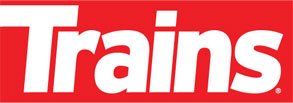Last time I actually hand counted rail cars on a modern train it was @137 rail cars. Today's DPU trains can be insanely longer. In 1930 I would imagine that the PRR, B&O, or NYC ran steam powered freight trains @ 100 rail cars, on what is now the NEC area rail lines, which have a very nonexistent, or very slight gradient, at speeds @ 60 mph, or greater. Even from Philadelphia all the way to Altoona, Baltimore, and to NYC, the track speeds were very fast, as the gradients were very slight, enabling very long freights, at high speeds. However on the "mountain" grades trains were broken up into smaller sections, and reduced speeds. Today they oftentimes have stalls on steep grades due to either defective/failing locomotives, or miscalculations of particular loco capabilities, and train weight and length. They used very scientific calculations, but mostly used a scientific calculation educated best guess of what train length successfully ran the grade in previous operating sessions, then a rule was established on how many loco's to add onto a trains weight/length to prevent stalls, on gradients in a particular area. Big wigs in Corporate came up with the slide ruler, fantasy brain fart scientific calculation, of running an 800 car, 16 loco, iron ore Jenny "Super Train" train from Morrisville to Altoona. The bad idea had so many broken knuckles by the distance to Paoli, that the train was broken up into many, many shorter segments, and the "brilliant idea" was permanently filed in the cylindrical file cabinet. In awesome Australia they commonly operated ridiculously long iron ore Jenny trains for decades, and one fairly recent one had a ludicrously catastrophic derailment resulting in the scrapping of a huge number of absolutely twisted up rail cars

